Let’s talk...
About the sense of capability as children mimic the movements of various animals. We can talk to our child about tasks they can now accomplish that they couldn’t before. We can also boost their sense of capability by saying, “Yes, you can!”
About play: The book is interactive and encourages movement and play. We can talk with our child about the games they enjoy and introduce them to games we used to enjoy in our childhood.
Let’s enrich our Language...
The book is rich with action verbs and body part names like arms, legs, feet, neck, etc. We can facilitate their use in our daily lives to describe body parts and movements, encouraging the child to describe their actions.
Let’s explore...
We can explore different sources for information about the animals mentioned in the book: their types, food, and living habits. Also, we can enjoy watching a documentary with our child.
Let’s create...
The book employs the well-known collage technique of the illustrator Eric Carle, creating a beautiful composition of cutouts, fabrics, newspapers, and household materials.
Let’s play...
We can play the “Animal Yoga” game together, mimicking the movements of the various animals mentioned in the book, and adding other animals!
Let’s talk...
About feelings:
we can recall Sugar’s feelings in different situations, and we can ask our child: How did she feel? How did she manage to get the apples and who helped her?
About disagreements: Sugar disagreed with her friend Mina over an apple. We can suggest another ending to their disagreement.We can ask our child: Have you ever disagreed with your friend? How did you overcome it?
About similar situations: Have you ever faced a difficulty? How did you handle it?
About situations: How should we interact with people with special needs?
Let’s enrich our language...
We can look for new expressions in the book and explain them to the child, such as: landed on the ground, the sun was about to set, well-fed, swaying, and others.
Let's communicate...
Words of encouragement: The bird helped Sugar and encouraged her saying: “Don’tworry Sugar, we will find another way. ”We can think with our children about phrases and expressions that can encourage us during difficulties, such as: “You can do it,” “Ibelieve in you,” “What matters is that you keep trying.”
What am I good at? We can draw our child’s hand on paper and think together about characteristics that make them special and skills they are good at, and record them in the hand drawing.
Let's share...
We can prepare food together using apples, such as: cake, pie, juice, or cut up an apple and enjoy eating it together.
Let's practice...
We can train our kangaroo jumps; we can try jumping on one leg, then on both legs, forward,backward, and so on.
Let's research...
We can learn about the kangaroo: What are its characteristics? Where does it live? What does it eat? We might want to draw it and design a pouch for it from paper or fabric.
Let’s talk...
About feelings: We can track different situations that happened with Mina: How did she feel? And how would you feel if you were in her place?
About similar experiences: We can ask our child: Have you faced difficulty in learning? How did you overcome it? And did you try to ask for help?
About our superpower: We can talk with our child about their unique abilities and characteristics.We can write them down and encourage them to ask siblings, relatives,and friends about the special qualities and abilities they see in them.
Let’s enrich our language...
Let’s clarify new words and expressions: extraordinary, somersault, shake, guessed, and others.
Let’s create...
We can choose a new word together from the story and discover different ways to learn it.We can sing it, draw it, and act it out.
Let’s explore...
In our Arabic language, both colloquial and classical, there are many names for objects, creatures, or places that begin with the word “Um” (mother), such as Um Arba’a wa Arba’een(Ladybug), Um Al-Qura (mother of villages-Mecca). We can explore other names
Let’s talk...
About problem solving: The siblings in the story faced a problem. We can ask our child: What was the problem? Who was able to solve it? Let’s share a problem we faced with each other and how we managed to solve it.
About sense of capability and promoting responsibility: We allow our child to choose a task in the house that they are responsible for implementing, and we can encourage them to do so.
About our child’s qualities: We can print our child’s hand on a paper, and write inside each finger our child’s qualities, characteristics, and strengths, then hang it on the refrigerator to give them a feeling of confidence and pride in their abilities
Let’s enrich our language...
We can examine the different drawings in the story: We can describe the drawings underground and above-ground and distinguish the similarities and differences between them. We can use terms like: wide, narrow, bright, dark, and others.
Let’s create...
Puppet: We can use old socks to make a puppet in the shape of Maurice the Mole. We can attach a nose and eyes to it, and dress it with a cloth hat. We can make whatever puppets we want for different animals.
Joint drawing:
We can draw a vertical or horizontal line on a paper and complete it each time in a different way. We can take turns with our child, to get a drawing, and we can colour the spaces in it together.
Let’s communicate...
We can have a meditation session and communication with nature. We can visit a nearby forest or garden and sit quietly and peacefully. We can also observe the different animals around us, smell the scents, and feel the wind blowing on our body.
Let's research...
We can search for animals that build their burrows underground, like the mole and others, and gather information about their characteristics and food. We can also watch a video about them on YouTube.
Let’s talk...
About anxiety: What happened to the little owl when her mother left her? How did she feel? How did the owl overcome her anxiety about her mother’s absence? What helped her?
Let’s communicate...
When we leave our child with others, it’s important for us to communicate and align expectations with the child and the adult responsible for them during our absence. We can create a schedule together and use symbols for our return time. For example: I’ll be back “after lunch” or “at sunset.”
What are our bedtime rituals at home? Let’s create a visual sleep routine chart together. We can add pictures and drawings; for example: a warm bath, gentle massage, bedtime story, and a goodnight kiss.
Let’s create...
Let’s make our own special night lamp that lights up exactly as we like. We can use cardboard or a small glass jar to decorate, adding a small light inside for a cozy glow.
Let’s talk...
About the feeling of boredom: We can ask our children when they feel bored and how. We can talk together about ways they can occupy their time.
About family relationships: The child helped their sibling after waking up from a nap. We can talk to our child and ask if they have ever helped their brother/sister and when and how it happened. How do they spend time together?
About preferred games: The knight, Sama, preferred a fantasy game. We can ask our child about their favorite games.
Let’s create...
“Entertaining Ideas Box:” We can write suggestions for activities to do at home and in the garden on cards, collect them in a box, and when we feel bored, we can draw a card and engage in the activity.
Let’s enrich our language...
We can explain new vocabulary to our children, such as knight, hole, and similes like “as fast as the wind.” We can add other words from the story to our child’s linguistic dictionary.
Let’s learn and play...
We can recall childhood games with our children, building houses from pillows and blankets. We can role-play and exchange roles.
Let’s Communicate and Create
We can go out with our children to explore our neighborhood, drawing a map inspired by the map in the book.
Let’s talk...
About experiences: We can follow the journey of the dinosaur and his friend Jojo, engaging with children about the places he visited, his behavior, his feelings, and the risks he This is an opportunity for us to accompany them on their journey and learn from their experiences.
About desires: We can talk about the places the dinosaur might want to visit and the activities he might want to do. We should encourage our child to suggest other places from their own experiences and ask them about the places they want to visit and the things they want to do.
Empowering the child and fostering a sense of capability and independence: We can discuss tasks our child can do on their own and those where they may need our assistance, along with their accompanying feelings. We can identify tasks or skills our child wants to learn, such as putting on shoes or making the bed, and support them in achieving those goals.
Let’s have fun and play...
“Where did the items hide?”: Let’s play the game “Hot or Cold.” We can hide the items and let the child search for them. We can guide them with the word “hot” when they are close and “cold” when they move away.
Let’s enrich our language...
We can enrich our child’s language and encourage them to describe what the dinosaur did during his visits to different places. We can use precise verbs and nouns, adding new qualities. For example, we might say, “a huge dinosaur, tall buildings…”
Let’s create...
A growth chart: we can choose a wall in the house and mark the child’s height on it. We can select pictures of our child at different ages and stick them in a long album, creating a growth chart from sturdy cardboard and decorating it. We can discuss our child’s abilities at each stage from birth to today and talk about things they would like to develop.
Let’s talk...
About desires: The little owl understands what he likes, such as sledding, eating ice cream, and adding numbers. We can talk to our child about the things they like and want to do.
About expressing feelings: The little owl tried various ways to get rid of the scarf. We can ask our child why he did that and suggest alternative ways to express dissatisfaction or displeasure to parents.
About participating in decision-making and choices: The owl mother decided to involve her child in choosing the scarf he wants. We can talk to our children about situations where they participate in decision-making, such as choosing clothes, toys, household chores, and situations where they don’t participate in making choices. Ask them: How do you feel? How would you like us to act?
Let’s communicate...
We can spend some quality time with our child on a nature walk or a trip to a nature reserve, like Al Hula Reserve, where we can learn about different bird species, especially during their migration season.- The owl mother knitted the scarf for her child. We can enjoy preparing a product with our child, like making an owl doll from old clothes.
Let’s enrich our language...
The little owl accurately expressed his dislike for the scarf using appropriate adjectives. We can play a guessing game with our children, saying, for example, “I see something tall, green in color…” and let the child guess. We ensure the use of precise qualities for the item or thing that our child will understand.
Let’s act out and create...
Let’s talk to our child about situations where they feel frustration or anger. The scenario helps us think together about ways to alleviate their feelings and use appropriate social expressions.
Let’s Talk
- About the sense of capability as children mimic the movements of various animals. We can talk to our child about tasks they can now accomplish that they couldn’t before. We can also boost their sense of capability by saying, “Yes, you can!”
- About Play: The book is interactive and encourages movement and play. We can talk with our child about the games they enjoy and introduce them to games we used to enjoy in our childhood.
Let’s Enrich our Language
The book is rich with action verbs and body part names like arms, legs, feet, neck, etc. We can facilitate their use in our daily lives to describe body parts and movements, encouraging the child to describe their actions.
Let’s Explore
We can explore different sources for information about the animals mentioned in the book: their types, food, and living habits. Also, we can enjoy watching a documentary with our child.
Let’s Create
The book employs the well-known collage technique of the illustrator Eric Carle, creating a beautiful composition of cutouts, fabrics, newspapers, and household materials.
Let’s Play
We can play the “Animal Yoga” game together, mimicking the movements of the various animals mentioned in the book, and adding other animals!
Let’s talk...
About the plot: We can follow the text and graphics and talk about the different characters and compare them, before and after entering the hat shop. We can ask the children: What has changed? What are their characteristics before and after entering the shop? How did this come out in the drawings? What do you think the hat seller told them so they would change?
About feelings: The feelings of the characters in the story have changed. We can follow the text and drawings and talk about the feelings of the characters. We can name the feelings and ask our children: In what situations do you experience these feelings? We can also share with them situations from our lives that made us feel the same way.
About our personality traits: The hats were able to highlight the hidden traits and change each personality. We can ask our children: What qualities do you like about yourself? Which quality would you like to stand out or change about your personality?
About dreams and wishes: Each person in the story wore a hat suitable for their beautiful dream, or for their desire and need. We can ask our children about their dreams, desires and wishes.
Happiness: The people of the city lived in a state of happiness while wearing the hat. We can ask our children: why do they feel that, in your opinion? What makes you feel happy?
Let’s enrich our Language...
New words and expressions appeared in the story, such as: standing upright; they fell asleep; Achievement; Heavy silence. We can explain them to our children and use them in our daily lives.
Let’s play together...
The wizard’s hat is a popular hat. With our children, we can search the Internet for fun games that we can play with the help of the hat.
Let’s explore...
There are many types of hats that refer to religious, cultural, popular, and political symbols. We can search the web for the types of hats and their symbols. Through it, we will get to know the different people and cultural symbols.
Let’s talk...
About feelings: Tilda was happy at the beginning of the story, and suddenly she felt upset and anxious, and her feelings were reflected in the drawings. We can follow the drawings and ask our child: How does Tilda feel? Why did her feelings change? How were her feelings reflected in the drawings? Did you ever feel down? how did you feel? Who supported you?
About sources of strengths: Tilda felt happy at the beginning of the story. We can ask our child: What are the things that make Tilda happy? What are the things that make you happy? We can share life experiences in which we felt failure and despair with our child. We can talk about the things that helped us overcome them, such as talking to people who are important to us and relying on memories of interesting experiences in our lives.
About sources of strengths: Tilda felt happy at the beginning of the story. We can ask our child: What are the things that make Tilda happy? What are the things that make you happy? We can share life experiences in which we felt failure and despair with our child. We can talk about the things that helped us overcome them, such as talking to people who are important to us and relying on memories of interesting experiences in our lives.
Let’s try and achieve...
We try so we can achieve more: With our child, we can identify a number of goals or challenges that they want to achieve, with a set time period. For example, having goals for household chores, such as: making the bed or organizing the closet at a record speed; commitment to throwing out the garbage; Cleaning the table – and other goals they may want.
Let’s enrich our language...
We can enrich our children’s emotional dictionary with motivating words that we adopt in our dialogues with them, such as: be strong; continue in this way; you did well; amazing; Blessed are your efforts; Be what you want to be; be as you will; you are brave; you’re great.
Let’s explore...
Tilda learned a lesson from the little ladybug. We can look at one of the living creatures around us with our child. Which ones can we learn specific skills or qualities from, that may motivate us to keep trying?
Let’s create...
With our children, we can bring cards on which we write words of encouragement, or we record the things that our children can do and make them feel empowered and happy, and put them in a jar. Children then can read a card every day, to instill in them a sense of ability and strengthen their emotional immunity.
Let’s talk...
About feelings: We can follow the children in the book and talk about the different feelings they expressed. We can talk about feelings of pride, empathy, a sense of achievement and empowerment. We can enrich our child’s vocabulary so that they can be aware of their feelings and express them better, while connecting how they behaved with how they felt.
About the child’s abilities and roles: With our child, we can recall an experience they went through in the family or at school, in which they expressed an opinion or position, by using words or by actions. How did they feel, and what did they learn from this experience?
About ways of expression: The book highlights several ways of expressing oneself through speech, actions, and creativity. We can track these methods, describe them, and discuss the ways our children express themselves, while giving examples from their daily life. We can also discuss the importance of making our voice heard and expressing ourselves by speaking up.
Let’s search and be initiative...
With our child, we can search on the Internet for children who made their voice and opinion heard on an issue that concerns them, such as the Swedish girl Greta Thunberg, who led a protest around the world in defence of the environment.
We can search and talk about things that need improvement in the country or neighbourhood in which we live. We can choose one cause, and we can volunteer with our children or family to improve it.
We can look...
We can look for organizations and institutions that provide different services, then we can contact them, get to know their work, and volunteer for them.
We can read...
We can read together the phrases on pages 2 and 3 and invite our child to write phrases in the empty bubbles at the end of the text to express methods that they think are important to make the world a better place.
We can follow...
About the feelings of the two bears: We can follow the feelings of the two bears with our children, we can name them and we can talk about the reasons they feel this way.
We can ask...
About the preoccupation of parents and children: The Big Bear was busy with household chores, and the Little Bear found something to occupy itself with at that time. We can ask our children: What do they like to do when the parents are busy?
We can talk...
About empowering our child and making them feel capable: The Little Bear organized and cleaned his cave and made his own bed. We can talk to our child about the things they can do on their own.
About independence...
About independence and support: The Little Bear felt big. We can talk to our child about what it feels like to be grown up. We can also ask them if there are things that make them feel small, and we also ask them: How would you like us to support you?
We exchange roles...
We exchange roles: the parents act out the children’s role, and the children act out the parents’ role. After that, we can talk about our feelings, our thoughts, and our behavior. We can listen to our children and try to understand what they think, how they feel and how they see us.
A Tent...
A Tent: We can build a tent out of sheets and pillows with our children. We can read a bedtime story to our child.
We can browse...
Capability Album: Together, we can browse the pictures of our child from birth until today, and we can talk with them about things they were unable to do, and about things that they are able to do now.
We can trace...
We can trace Leen’s feelings from the beginning of the story to the end (enthusiasm, hope, anxiety, frustration …). Did we go through similar situations? How did we feel?
Leen’s grandmother...
Leen’s grandmother supported her and encouraged her to go to the palace with the empty pot. Who and what helps us when we are feeling down?
We can track...
We can track the movements of the little bird accompanying Leen in all the drawings. What does he tell us in each one?
We can think...
We can think of people in our family or among our acquaintances who used their effort and integrity to pave their way to success, and we can tell our children their story. We can search for well-known people throughout history and read their story together.
The painter meticulously...
The painter meticulously embodies the homes, costumes, plants and objects of ancient Chinese culture. It is interesting to look at them, and to search the internet for the cultural symbols that we see in the emperor’s clothes, his throne, and in the decorations of ceramic pots, and learn about Chinese culture with our children.
Do we have...
Do we have empty pots waiting to be filled with plants? We can have a fun family farming activity together.
Let's imagine that...
Let’s imagine that we are an ant, what would the world look like to us? We may exchange roles in completing sentences, such as: If I were an ant, the bowl of water would have been a sea/ the ball would be a mountain/ the sneeze of our dad would be a storm! We can collect these sentences in a book that our child can add drawings to, and share with their friends.
We can recall...
We can recall the experience of learning a new skill with our child, such as riding a bike, or crossing the street. What prompted him to learn this skill? Who helped him? How did he learn it? It is also nice to share with our child our experiences in learning skills such as using a computer or a mobile phone, etc.
We can talk...
We can talk with our child about the things that he can do (such as assembling a certain number of puzzle pieces, preparing simple food, etc.), and about the things that he wants to do and is not yet able to. We point out that many skills develop during the course of our growth, as well as with practice.
Together, we can...
Together, we can recall the situations that Fares went through during his day, and that led to the emptying of his bucket. How did he feel? We can talk about other situations that Fares would have encountered at home, in the street, and at school, which would empty his bucket.
With our child...
With our child, we can remember the situations in which Fares felt that his bucket was full. How did Fares feel in every situation? Can we imagine other situations in which he feels his bucket getting full?
How do we encourage...
How do we encourage and help others in our daily life? We can chat with our child about what they are doing and what they can do to achieve that.
We can write...
We can write the title “We are a family that fills buckets” on a large paper, on which family members can record actions and words that help them fill buckets, such as saying thank you, helping with housework, sharing games with siblings, and others.
After reading the story...
After reading the story with our child, we can close our eyes and try to recover the smell or smells that remind us of each other. Which smells relate to other family members in our memories?
Places are also...
Places are also associated with specific smells in our memories. Which scents do we smell when we remember the house, the garden, or grandfather’s or a friend’s house?
We can talk...
We can talk about scents that our child loves at home, and others they do not like. They may wish to draw the sources of those scents. How can we make our home smell sweeter?
What do I love...
What do I love doing with my mom? We may want to make a list, which we can hang somewhere in the house. Every week, we can choose an activity to do together.
How do we choose...
How do we choose a gift for someone we love? We can talk about things that we take into consideration when we choose a gift, such as: the person’s taste, interests, needs, and others.
The scent of...
“The scent of my father/grandfather/my grandmother/my sister/brother” may be the title of a beautiful book that we help our child in writing and drawing.
What is this smell...
“What is this smell?” could be a fun game in which all family members can participate. We collect various objects (food, plants …) and close someone’s eyes, and they must try to figure out the source of the scent based only on its smell.
Ask your child...
Ask your child about things/people that she/he thinks are “magnificent”. What makes them so?
The girl encountered...
The girl encountered problems during her work. What were they? And how did she solve them? Your child might want to suggest other solutions.
The girl makes...
The girl makes several things and puts them on the pavement. Encourage your child to examine them and choose what she/he likes. What can they be used for?
Talk with your child...
Talk with your child about a personal experience in making something (it can be a toy, a cake…) what contributed in making it successful or less successful?
The girl appoints...
The girl appoints her friend — the dog– as assistant. When making things, who would your child like to be with?
The girl...
The girl in the book has no name. Why did the author choose to do this? What name would your child give to the girl?
The text is...
The text is full of verbs related to making things: hammer, measure, glue, wrench, fiddle…This is an opportunity to open your toolbox – or create one — and set up a small workshop to make things with your child. Maybe a kite, or a small cart?!
Many children feel...
Many children feel anxious when they start first grade. The must get used to many new things. It is important to talk to children about anxiety over school, and discuss what can help him. He can draw his own parachute and write down what helps calm his fears.
The illustrations depict...
The illustrations depict different angles to express Toby’s feelings in each one. It would be nice to try to take pictures of things from different angles, such as taking picture of inside a car, taking picture from a high point, low point, and see what we can understand from the picture?
When the bird...
When the bird tried to take part in the auditions, he was refused and picked on. We can talk with our child about the bird’s feeling. Does the child experience similar feelings when he/she tries to play with a group of friends in class, or to take part in a family event?
The little bird...
The little bird did not give up but tried again and again to show his talent. We can encourage the child to think of different ways for the bird to show the band his talent.
We can think...
We can think if a close family event (a party or hanging with friends, or a trip). How can our child help? And how can we make it easier for him/her to help?
Music, beat, playing...
Music, beat, playing, singing, songs, these are some musical words the text includes. We can recall some other musical words that our child knows.
Our family is talented...
“Our family is talented!” it a name for a talent show that you and all your family can put on. It can be fun to arrange such a program with your child, arrange the stage and give out prizes to each other!
The hare was proud...
The hare was proud of some aspects of his personality. We suggest having a conversation about the needs of both adults and youngsters to be proud of some positive aspects of our personality.
The animals described...
The animals described the hare as arrogant. We might talk to our children about the difference between being proud and being arrogant.
The hare was not...
The hare was not so serious during the race. This is an opportunity to talk to our children about the meaning of this behavior.
When the hare...
When the hare reached the finish line, the laughter became louder. We can have a talk about the hare’s feelings in this situation, and ask if he might change his behavior.
Who challenges the hare?...
Who challenges the hare? We can encourage our children to imagine a race between the hare and other animals shown in the story (such as, the squirrel or the mouse), and to ask who is going to win the race, and why.
Read and act...
Read and act out the story. The hare ran quickly, while the tortoise was crawling, or the hare closed his eyes to get some sleep etc.
We can read...
We can read slowly while emphasizing the rhythm in order to expose the children to a poetic way of writing.
We can invite...
We can invite family and friends to arrange a race, in order to experience it.
Talk with your child...
Talk with your child about what he/she feels similarly to the cloud in the books. Do they have things in common? What?
The cloud enjoys...
The cloud enjoys moving above different places. If we were a cloud where do we want to go?
The cloud feels...
The cloud feels lonely when its parents hang out at night, so she spends time with her cloud friends. We can talk with with our child about his/her feelings when we are away, and think together about things that can help our child feel secure (such as talking on the phone, or staying with a person he/she loves and feels comfortable with).
The cloud is happy...
The cloud is happy to play with its friends. What do we like to do with our friends?
In Autumn...
In Autumn the sky is full of different shapes of clouds. It would nice to lay down in the garden and watch the clouds. What shapes do we see?
Clouds in our house!...
Clouds in our house! We can look for materials at home which can help us making clouds: such as, cotton balls, shaving soap and can add food coloring to make colorful clouds!
Take a look...
Take a look at the first illustration in the book: what does Saad feel while he is on his way to the barbershop? What in the illustration can tell us about his feelings? We can have a conversation with our child, about his feelings in the same situation.
In general...
In general, a parent or older sibling goes with the child to the barbershop/beauty parlor. This gives a child a good feeling that someone has devoted special time only for him/her. With whom does our child like to go with? Is there a special “ritual“ for this visit?
What do we like...
What do we like about our visit, and what annoys us? We might like to share our children with our experiences.
Saad’s new hairstyle...
Saad’s new hairstyle surprises his mother, friends and relatives. Do they like it? We can talk with our child about whether they like it or not by looking at the illustrations.
Some parents like...
Some parents like to keep some hair from their child’s first haircut or keep some photos of it. That is an occasion to go over the album pictures, and to recall this experience and to talk about the feelings we had.
Our children go...
Our children go with us to multiple public places such as, the post office, the bank, the market. This helps them gain new skills such as waiting for your turn, to choose, to count money etc. We can plan a visit to one of these places and take some photos of it. We can use these photos to write a book using these photos.
Welcome to the...
“Welcome to the weird hairstyle exhibition”! We can invite the family children, and maybe adults as well, and bring for them combs, hair ties, hair dye and other stuff, so the designers can use them to make the weirdest hairstyles ever!
Children like to...
Children like to help you clean the house, it gives them a sense of independence and belonging. You can go over the illustrations together and see the activities that Anbar and his mom do together. This is an opportunity for you to have a conversation about the things that your child like to do to help you at home (such as setting the table, or folding laundry).
Sometimes it is hard...
Sometimes it is hard for the children to understand that parents need space of their own. You can have a conversation with your child about activities around the house that you (parents) do alone and what you enjoy doing together. Make a plan for 1 activity or more to do together, and enjoy the time.
Anbar builds a tent...
Anbar builds a tent in the garden and invites his mom to visit. Children like to play “house” and invite us to play with them. You may find a place at home or in the garden for your child to make a home and be ready to invite you.
Anbar makes a surprise...
Anbar makes a surprise to his mom and leads her blindfolded to his toy home. Children like surprises, and they enjoy making and getting surprises. You can decide with your children on reciprocal surprises (such as making a favorite cake, or inviting a favorite guest).
3 or 4 years old...
3 or 4 years old children are impatient, because they still do not fully understand the concept of time. We can help them – as Anbar’s mom did – specifying time by describing events (I can play with you after I wash the dishes). It makes it easier for the child to wait, if they know in advance till when. For this purpose, you can use an hourglass, or an alarm. You can plan in advance an activity that you would like to do together.
In some way...
3 and 4 years old children are dependent, in some way, on their parents for playing, and it is hard for them to create a game by themselves. It would be nice if you can prepare a book, with your child, and call it “what I like and what I like to do alone”. Each page of it can contain a picture that describes what the child likes to do. You can write on each page “I am able/ I like…” (drawing, building a cube tower, to water the plants in the garden…). Then you will be able to tell your child – as Anbar’s mom told him – “good job!”
 From My Head to My Toe
From My Head to My Toe  I Love Apples Too
I Love Apples Too  Mother Trembles
Mother Trembles 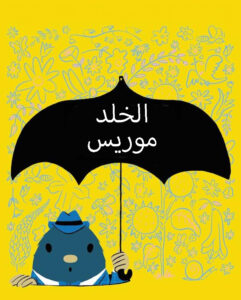 Maurice the Mole
Maurice the Mole 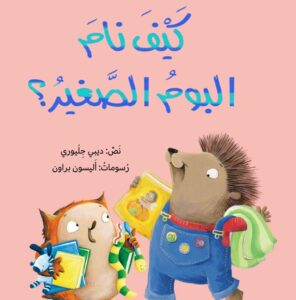 How the Little Owl Slept
How the Little Owl Slept 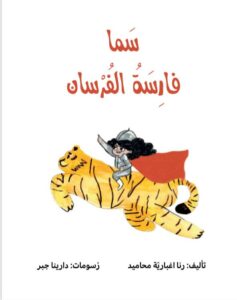 Sama the Chivalrous Knight
Sama the Chivalrous Knight 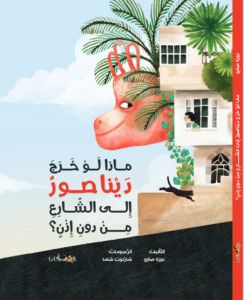 What if the Dinosaur Went Out to the Street
What if the Dinosaur Went Out to the Street 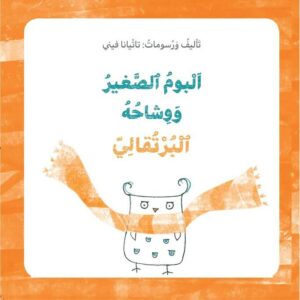 The Small Owl and his Orange Scarf
The Small Owl and his Orange Scarf 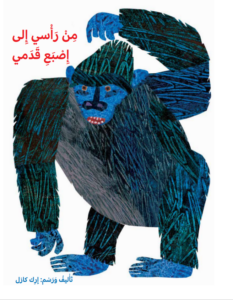 From My Head to My Toe
From My Head to My Toe 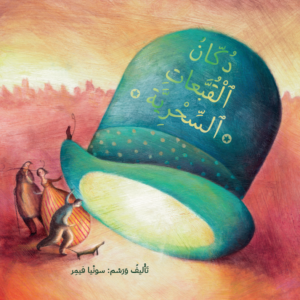 The magic hat shop
The magic hat shop 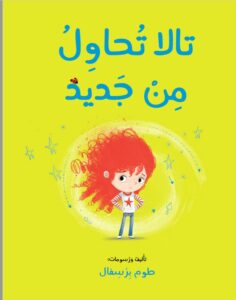 Tilda tries again
Tilda tries again  The Day the Elephant Flew
The Day the Elephant Flew 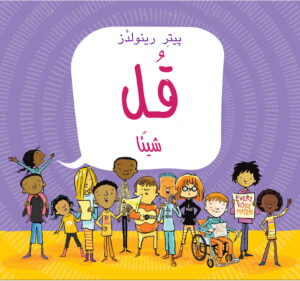 Say something
Say something  Sleep Tight Little Bear
Sleep Tight Little Bear 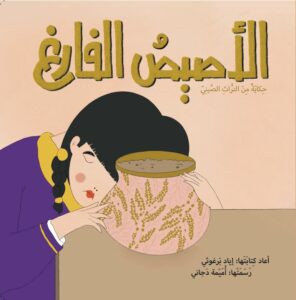 The Empty Pot
The Empty Pot 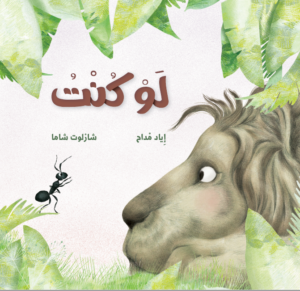 If I Were
If I Were 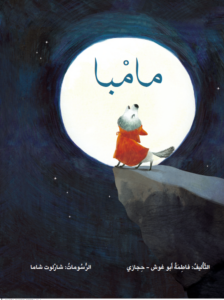 Mamba
Mamba 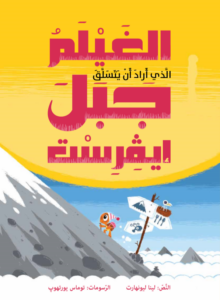 The Turtle Who Wanted to Climb Mount Everest
The Turtle Who Wanted to Climb Mount Everest 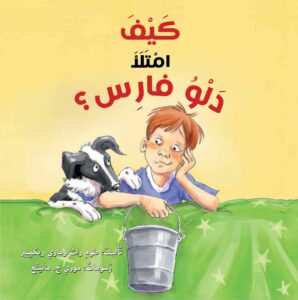 How Full is Your Bucket?
How Full is Your Bucket? 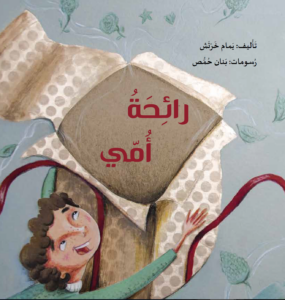 Scent of My Mother
Scent of My Mother 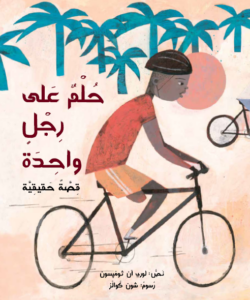 Emanual’s Dream
Emanual’s Dream 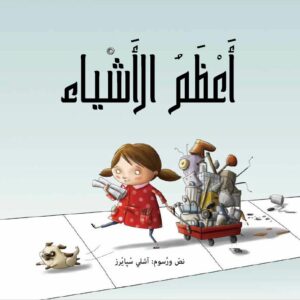 The Most Magnificent Thing
The Most Magnificent Thing  Parachute
Parachute 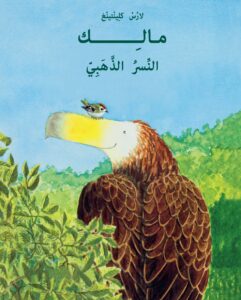 Malek, the Golden Eagle
Malek, the Golden Eagle 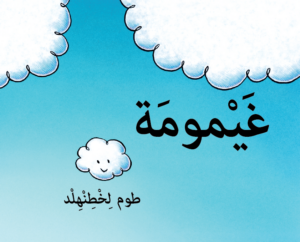 Cloudette
Cloudette 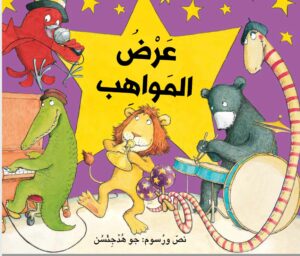 The Talent Show
The Talent Show 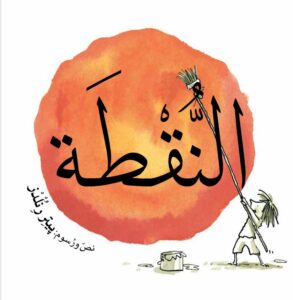 The Dot
The Dot 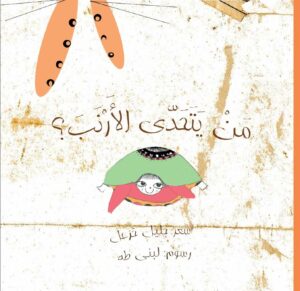 Who Challenges the Rabbit?
Who Challenges the Rabbit? 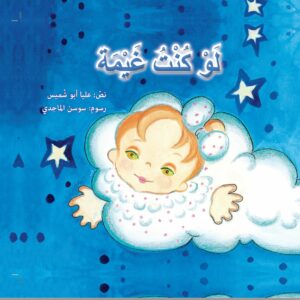 If I Were A Cloud
If I Were A Cloud 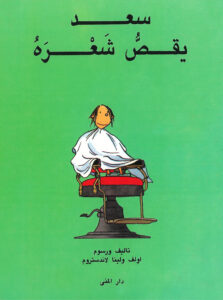 Will (Sa’ad) Gets a Haircut
Will (Sa’ad) Gets a Haircut 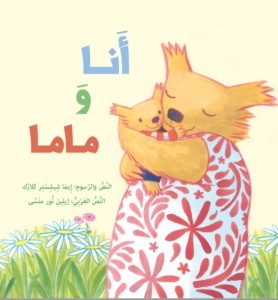 Mummy and Me
Mummy and Me 
